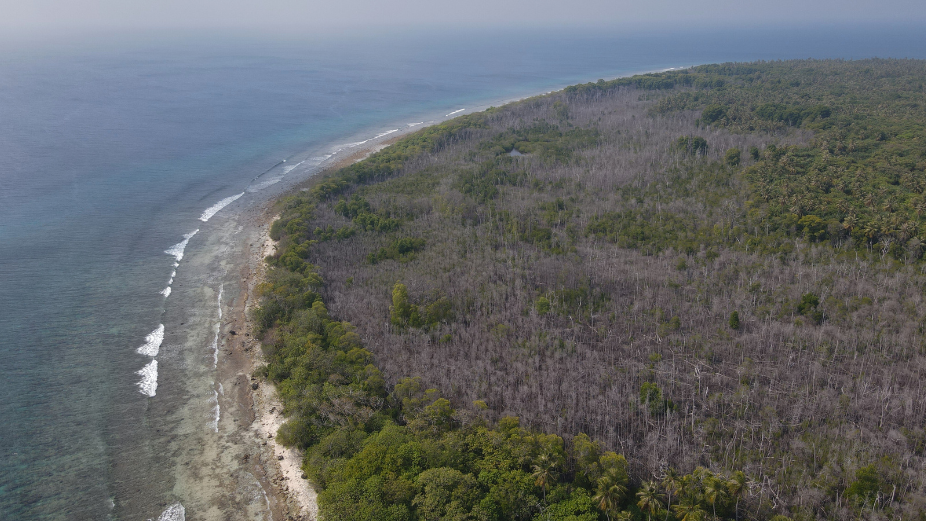
A comprehensive study has revealed that the unprecedented dieback of mangrove forests in the Maldives in 2020 was primarily driven by rapid sea-level rise and an extreme positive phase of the Indian Ocean Dipole (IOD). According to the research, which utilised a combination of satellite imaging, dendrology, and sediment geochemistry, approximately 25% of mangrove-inhabited islands in the Maldives experienced significant vegetation loss, underscoring the vulnerability of low-lying Small Island Developing States (SIDS) to the compounded effects of climate change.
The study led by Lucy Carruthers documented a stark decline in mangrove health following 2020, with the Normalised Difference Vegetation Index (NDVI)—a measure of vegetation vitality—dropping from an average of 0.85 before 2020 to 0.75 afterward. This decline was attributed to severe salinity stress caused by rising sea levels, which outpaced mangrove sediment accretion rates by nearly five times between 2017 and 2020. While sediment accumulation rates on affected islands averaged 6.4 mm per year, sea levels rose at an alarming rate of 30.5 mm annually during the same period.
Researchers identified that the dieback coincided with a historically intense positive IOD event, the second strongest on record, which brought warmer sea surface temperatures and heightened evaporation rates. This climatic anomaly contributed to increased salinity in mangrove basins, particularly affecting species such as Bruguiera cylindrica, which have limited tolerance to high salinity levels. The study noted that the geomorphic setting of the mangrove forests—situated in low-lying, hydrologically isolated basins—further exacerbated the impact, as these areas are prone to ponding, which traps seawater and heightens salinity stress.
Detailed analysis of mangrove samples revealed clear signs of salinity-induced stress. Dead trees exhibited enriched carbon isotope ratios (δ13C), indicative of reduced stomatal conductance, compared to living trees. This physiological response, coupled with lower sediment accretion rates, suggests that prolonged inundation and salinity stress likely triggered a positive feedback loop, where reduced root productivity led to soil submergence, further increasing salinity and driving tree mortality.
The implications of this dieback are profound for the Maldives, the world’s lowest-lying nation, where mangroves serve as critical buffers against coastal erosion, support biodiversity, and provide vital resources for local communities. The study emphasises that the loss of these ecosystems could severely impact livelihoods, particularly in regions dependent on mangroves for fisheries and storm protection. It also highlights the broader risk for other SIDS in the Indian Ocean, which could face similar threats from future climate extremes.
As the frequency and intensity of IOD events and sea-level rise are projected to increase under current climate change scenarios, the study calls for urgent adaptive conservation strategies. The researchers recommend prioritising restoration efforts and developing targeted conservation policies to enhance the resilience of mangrove ecosystems, which are crucial for the survival of island nations facing the frontlines of climate change. This study serves as a stark warning that without immediate intervention, the accelerating impacts of climate change could push fragile ecosystems like mangroves beyond their thresholds, with cascading consequences for biodiversity, food security, and coastal protection.









